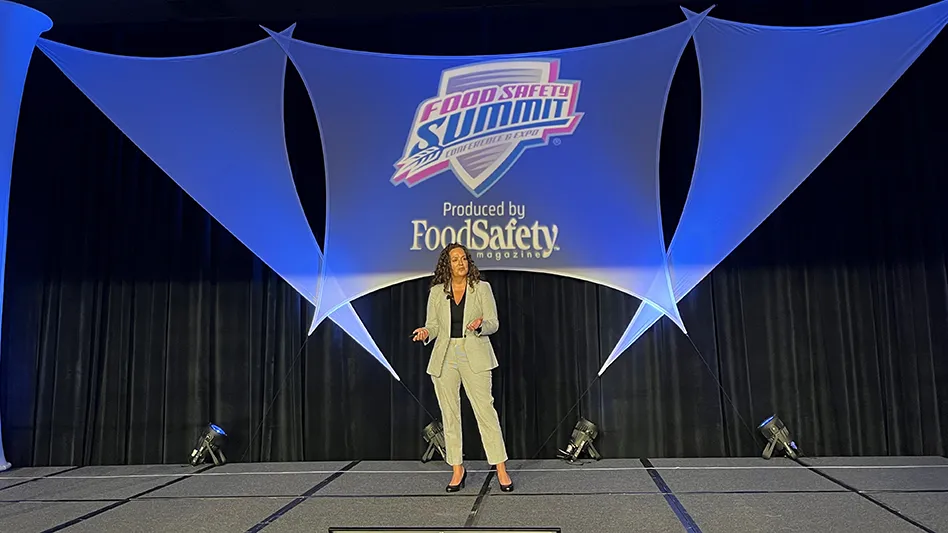
Courtesy Mohammad Salehi
Editor's Note: Writer Kristen Hampshire originally interviewed Mohammad Salehi prior to the fall of Kabul, which occurred Aug. 15, 2021. After the Taliban regained control of the country, Hampshire reached out to Salehi to find out how current events might affect his family, Heray Spice and the farmers he works with. The story has been updated with that info. We will continue to update this story as events unfold.
Deep-orange strands from delicate violet saffron flowers are good as gold to Mohammad Salehi.
To him, it’s a sacred spice that promises opportunity for farmers in his home province of Herat, Afghanistan, education for children who benefit from some of its profits and a culinary delicacy for United States chefs who can buy it from his company, Heray Spice.
“The saffron is not appreciated in the local [Afghani] market — no one cares for the farmers,” Salehi said, noting how farmers are limited in the crops they can grow. They are constantly influenced by Taliban insurgents who want them to grow opium since the drug trade finances its insurgency activities.
In 2002 after the fall of the Taliban, when the U.S. and United Nations (U.N.) extended support to cultivate other products such as saffron, some farmers in Salehi’s home region of Haret, which borders Iran, took advantage of the opportunity.
Some members of Salehi's family began farming saffron after the fall of the Taliban, finding the spice more profitable than other crops. Meanwhile, Salehi, who was an interpreter for the U.S. Army in Afghanistan, relocated to Chicago in 2014 under a program offered to those who risked their lives to fight terrorist organizations. After working several jobs to make a living, he returned to his home country to visit and hatched a plan to start a business.

Heray Spice — essentially a farming co-op — was born in 2017 with three farmers involved and six seasonal women who harvested and processed the saffron. Since that time, it has grown to 28 farmers and about 20 seasonal workers, all of whom are paid 30-50% more than market value. Ten percent of the proceeds go toward schools in the Herat province.
“I wanted to do something in connection with my country — to say, ‘This is from my land, this is what my family is doing,’ ” said Salehi.
In August 2021, the Taliban regained control of the country after the U.S. withdrawal. Salehi said businesses, such as his, are worried about the stability of the country and their operations. He also said he is worried about whether the Taliban will continue to allow women to work because they account for 80% of Heray’s operations and labor during harvest season.
“We are hopeful and fearful at the same time,” he said.
Meanwhile, Salehi remains highly motivated to create an entrepreneurial venture that can give back while focusing on producing a safe, consistent and quality product. Here’s how he does it.
Salehi’s goal for Heray Spice is three-fold: to help farmers, support the region’s children and introduce a special product to chefs and American households. His company is a vehicle for opportunity. And Heray Spice invests in its people by providing training, sanitary supplies and good wages.

As the food safety manager, Salehi says spices require special handling and protocols to ensure quality. “Spices are not like other products a restaurant buys like meat,” Salehi said. “A spice has a bigger lifecycle, with cultivation in April or May and harvest in November, then it takes two to three months to pick and clean the flowers.”
Each flower produces only three strands that must be carefully cleaned by hand, then dried before undergoing microbial lab tests so it can be sent to the U.S.
“Since we are working with a generation of farmers who get up in the early morning and go to the fields, then return at night to sleep, we have to train them and keep them consistent with sanitation,” Salehi says.
Every saffron flower is touched by the hands of a farmer — which is quite different than other crops that can be harvested mechanically. So, Heray Spice holds pre-harvest seminars to teach co-op farmers about proper sanitation. “We give them soap and sanitation supplies,” Salehi said, “and tell them, ‘We don’t want you to store it at home. Use them. If you need more, ask us. Before you go to pick up the flowers, you have to wash your hands with soap.’”
Admittedly, these aren’t common practices among farmers in his region — or in most spice-producing regions of the world, for that matter, Salehi said. So, promoting quality and safety requires a mindset shift and motivation. “We say, ‘This is what we ask of you, and this is what we give you in return,’” he said of the much higher pay the co-op farmers yield. Not to mention, they know they are benefiting local schools by their work.
Heray Spice also provides farmers with baskets so they don’t use vessels from home or their own pockets to store and transport the strands to the company’s processing site. “The fact that we train our farmers is what makes our processing of spices different than others you find at the local market,” Salehi said. “We want to control the safety from harvest time to the table of American people as much as we can.”
Process & Progress Another challenge in spice processing, aside from its lengthy and labor-intensive nature, is the range of variables that can potentially interfere with quality since the spice is imported. The saffron must be properly stored and not exposed to too much light, which can compromise its potency. “There are always risks involved, and that’s the nature of food production,” Salehi says.
But Heray Spice can reduce contamination by 80% because processing happens in the Heray Spice facility, not on farmers’ properties or in their homes, which is a typical practice. Women working in the plant wear masks and adhere to sanitary procedures. Saffron is usually heat-dried to improve sanitation, since the region’s wind and sand can interfere with quality when the product is dried outdoors. The conditions must be just right for Heray Spice to use its rooftop for drying. “Then, it is collected, packed and stored in our office in a cool, dry place,” Salehi said.
Twenty-pound batches of saffron are tested in an Afghan lab built by the U.S. government before shipping. “From the U.S. border, it comes to our offices in Chicago, and if customers want an additional lab test with U.S. results, we work with a lab in the area and can send those results to the client,” Salehi said.
Salehi expects to grow the co-op base in 2021 and beyond, now that restaurants have reopened and there’s more demand for the product. And above all, he’s proud of the nurturing aspect of the business, which he compares to how a mom feeds her children.
“Whenever we feed people with good product, with saffron, I personally feel proud of that,” Salehi said. “Because of the hard work of our farmers, we are bringing a good ingredient here, and that gives me a sense of pride, too, because now Afghanistan people are giving back and helping this country. I was given help by this country, so that sense of nurturing people brings me a smile.”
The author is a frequent contributor to Quality Assurance & Food Safety magazine.
Latest from Quality Assurance & Food Safety
- FDA Issues Update on Post-Market Assessment of Tara Flour
- ASI Announces Training Partnership with Rootwurks
- Nfinite Nanotech Closes $6.5 Million Seed Financing to Create Flexible Food Packaging with Nanotechnology
- University of Pretoria Food Science Student Wins IFT and PepsiCo’s Academic and Travel Undergraduate Hybrid Scholarship
- Kraft Natural Cheese and Shawn Johnson East Celebrate Launch of Kraft Signature Shreds
- Natural Sourcing International Announces Voluntary Recall of Black Chia Seeds
- PTNPA's DC Fly-In Connects Members with Policymakers
- Breck Partners Acquires NPX One





